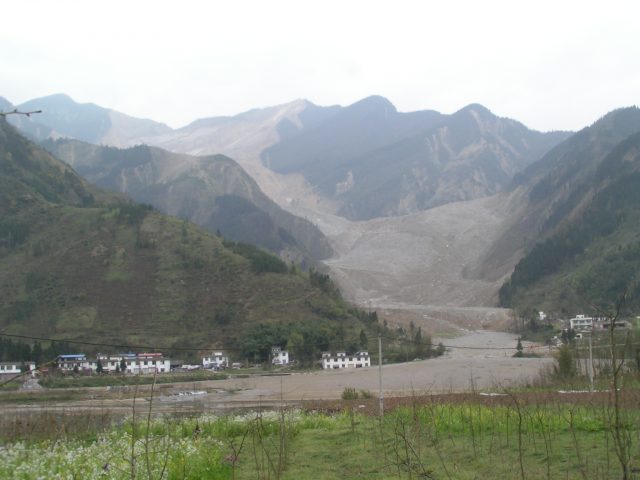15 December 2016
On the difference between prediction and foresight in landslide hazard assessment
Posted by Dave Petley

The runout of large landslides can rarely be predicted, but the potential behaviour can still be foreseen
On the difference between prediction and foresight in landslide hazard assessment
In one of the landslide sessions at the AGU Fall Meeting yesterday one of the speakers made an interesting comment about his perception of over-confidence of landslide experts in the prediction of landslide behaviour. The comment was made in the context of landslide runout, which is highly dependent on initial conditions. The point that was made is that, given these conditions are not known in advance, it is impossible to predict with any confidence the behaviour of many landslides. I agree.
However, this does not mean that it is impossible to foresee the behaviour of a potential landslide. For something to be foreseeable does not require exact prediction of its behaviour. Foresight means anticipation of a potential outcome – this is in essence a risk-based approach, and it is entirely possible in almost all cases for landslides.
Let me illustrate my point through a hypothetical example. Let’s imagine a slope in a mountain valley that has undergone several previous phases of movement, none of which have had a long runout but all of which have been substantial. There is a discussion as to whether to allow the construction of houses on the land in the valley below the landslide – should development be permitted or not? There are two elements to the assessment of the hazard posed by the landslide – first, can the landslide reactivate once more? And second, could it run out onto the land in which the houses are being planned?
Assessment of the likelihood of reactivation is quite straightforward, and based on the previous history of failures is likely to conclude that this is possible. In our imaginary example all parties agree that a further failure could occur. Analysis of the potential runout is much harder due to the problems outlined above. One approach is to model, but that is difficult given the dependence on initial conditions, the possible volume of the mobilised mass, etc. But there is an alternative, which is to look for similar landslides in similar materials, and to determine how they have behaved. This is particularly useful if they are located in the vicinity of the landslide in question. If they show long runout then there is the potential that the landslide in question might also show a high mobility, and thus pose a risk to the houses.
In our hypothetical example a brief examination of slopes in the local area suggests that some have displayed high mobility.
Thus, in this case long runout / high mobility behaviour is not predictable but it is foreseeable. Given the vulnerability of the people in the houses, a reasonable approach would be to prevent development even if the likelihood of high mobility of the landslide was comparatively low. This is a risk-based approach; it is common across the spectrum of natural hazards and it does not require that exact predictions of behaviour are made.


 Dave Petley is the Vice-Chancellor of the University of Hull in the United Kingdom. His blog provides commentary and analysis of landslide events occurring worldwide, including the landslides themselves, latest research, and conferences and meetings.
Dave Petley is the Vice-Chancellor of the University of Hull in the United Kingdom. His blog provides commentary and analysis of landslide events occurring worldwide, including the landslides themselves, latest research, and conferences and meetings.